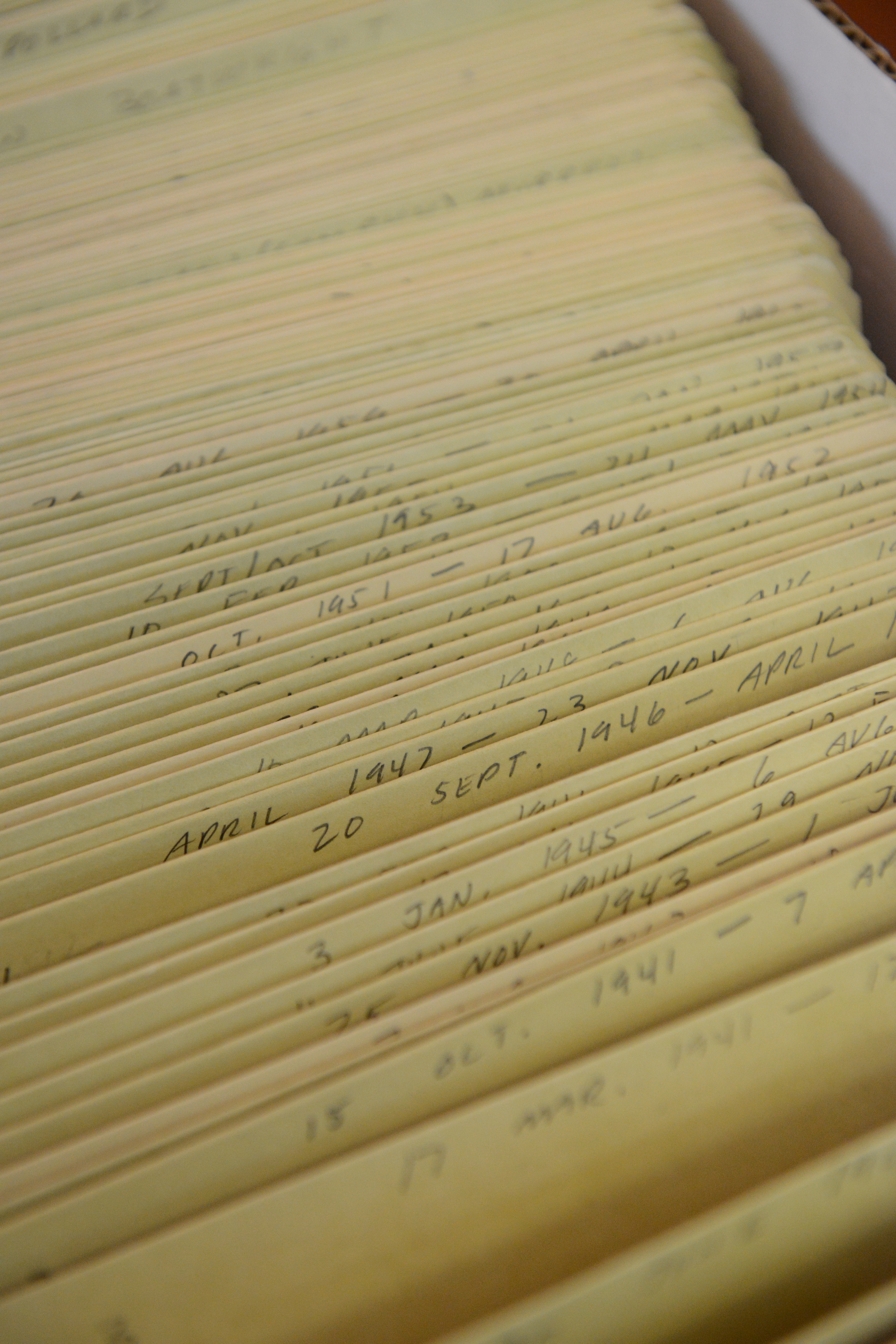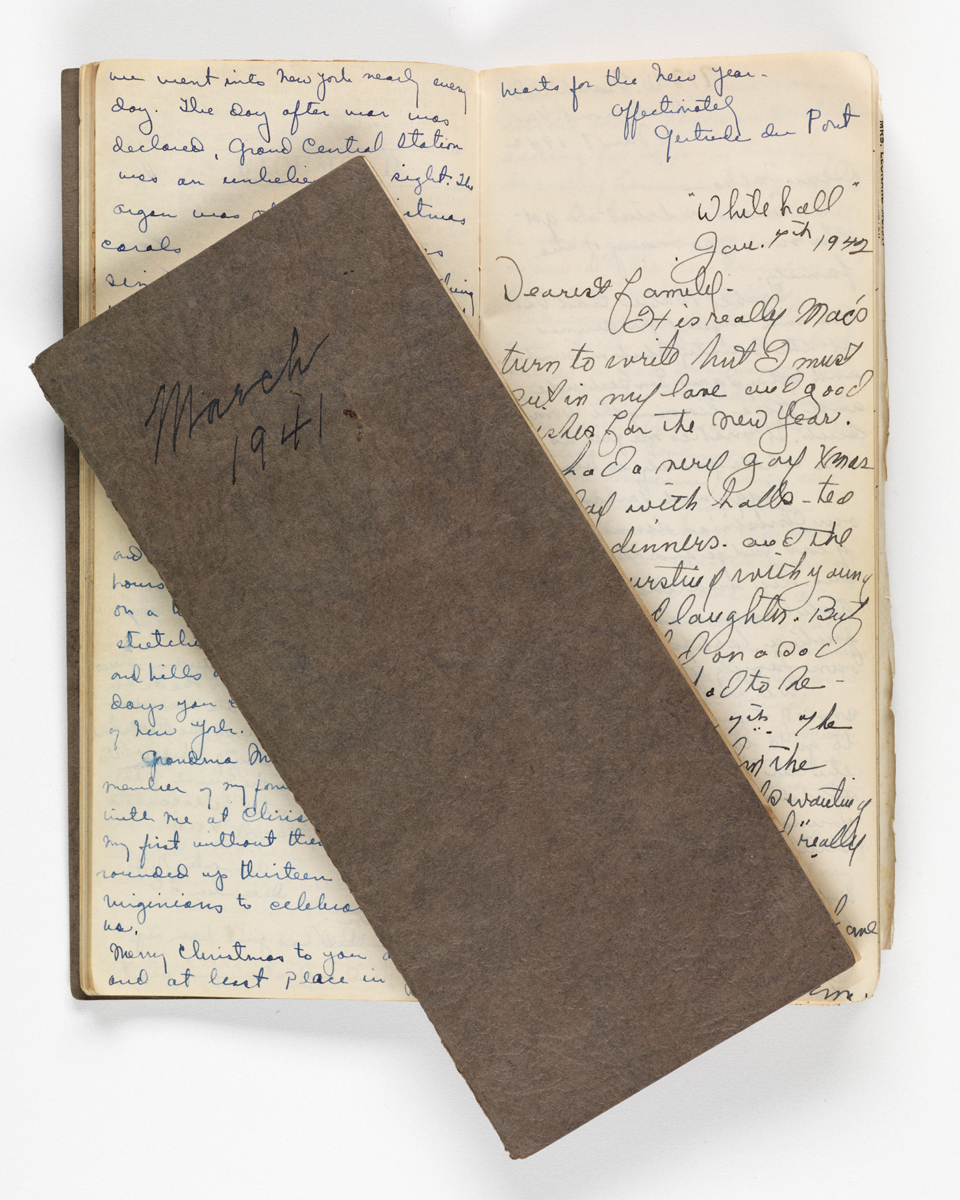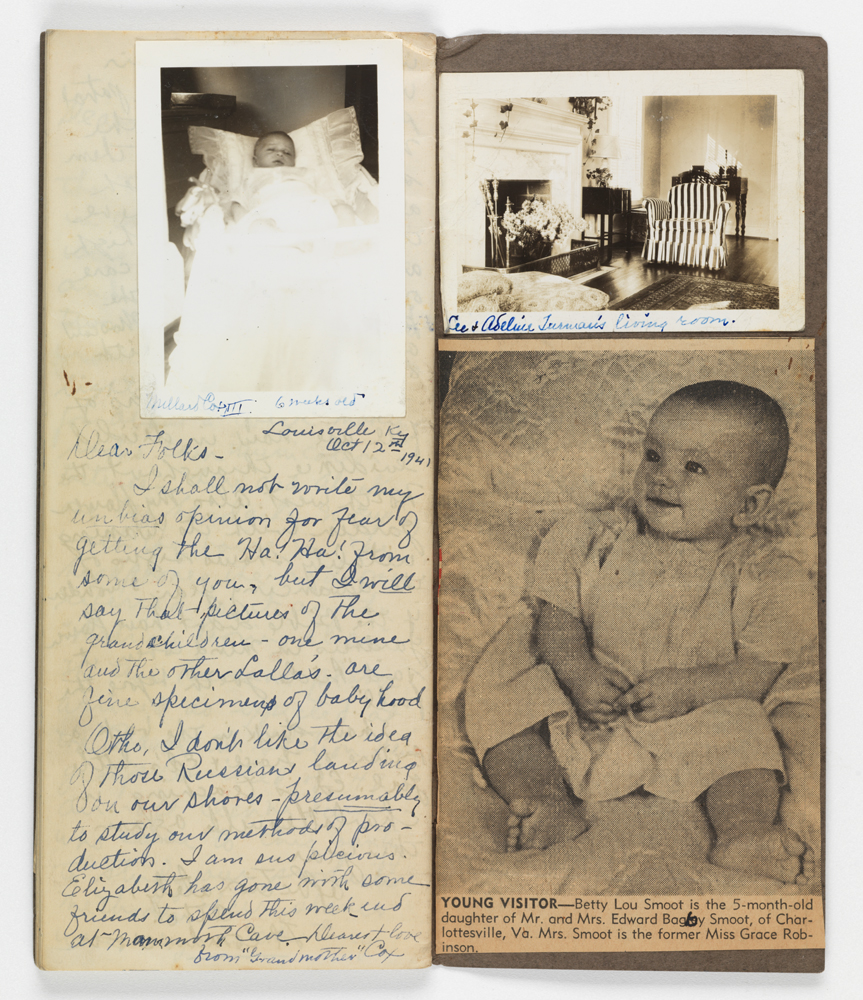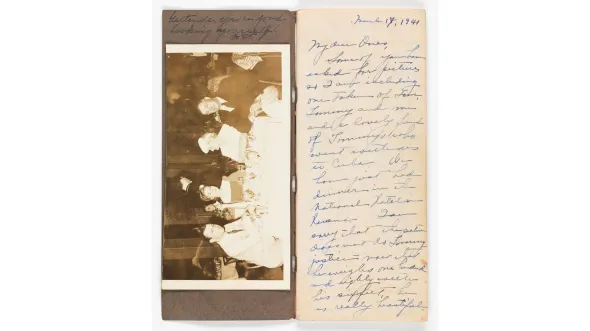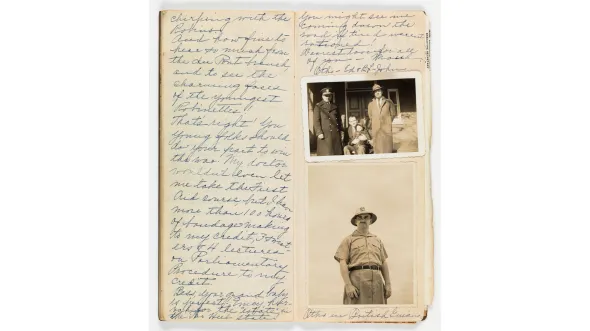Social networking before Facebook: Here at the Virginia Museum of History and Culture, we’ve collected many examples of two people communicating with each other by letter. Of course, the basic letter was the normal way to communicate throughout most of history, but the idea of having people use a common location to post thoughts and updates with the ability to provide feedback seems like a modern phenomenon, right? As it turns out the Pollard family of Virginia were engaged in what we would call social networking as early as 1920.
Beginning in the 1920s, the Pollard family began writing each other in small envelope-sized notebooks they dubbed “round robins.” Initially these were circulated between eight Pollard siblings, including former Virginia governor John Garland Pollard, but as time went by spouses and children began taking part as the first generation of writers passed away. Entries read like open letters to the family sometimes with newspaper clippings and photos included. After reading and writing in “the robin,” a family member dropped it back in the mail for the next recipient.
The Pollards were mostly solid-southern Democrats with many family members directly involved in the Virginia politics of the day. Influenced by the Progressive Movement, many of their discussions related to women’s suffrage and Prohibition, but as the decades passed, later topics included World War I, the rise of fascism in Europe, World War II, and the Civil Rights Movement. As more participants became involved, the round robins began to represent a sampling of perspectives from much of the East Coast, including Pennsylvania, New York, Kentucky, Virginia, Alabama, and Florida.

